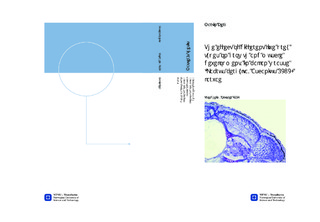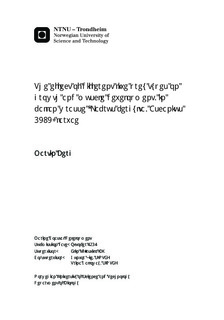| dc.description.abstract | Sea lice have been causing problems in Norwegian salmon farming industry for decades; increasing mortality and reducing the welfare of farmed and wild fish. Various chemical agents have been used to combat sea lice, but increased tolerance and resistance have shifted the focus more onto biological combatants in the form of cleaner wrasse. The ballan wrasse (Labrus bergylta) is the most promising species for aquaculture, but problems with poor larval growth and survival suggests that the feeding practices in use today remain suboptimal.At present, the feeding regimes consist of enriched rotifers, followed by Artemia sp. and weaning onto formulated feed. However, the nutritional profile of copepods is known to be highly beneficial for marine fish larvae, and increased larval growth, survival and development have been reported when copepods are administered as live feed. In the present study the fish larvae were fed intensively cultivated copepod nauplii (Acartia tonsa) in order to evaluate the effects on somatic growth, survival and muscle development, compared to when being fed rotifers (Brachionus ibericus). Four different feeding regimes were used; the Copepod treatment received copepod nauplii 4-30 dph, while larvae from the Cop7 treatment received copepod nauplii 4-10 dph, followed by short-term enriched rotifers (11-30 dph). Larvae from the treatments RotMG and RotChl were given short-term enriched and cultivated rotifers respectively, 4-30 dph. Larvae from all treatments went through a transition phase onto Artemia sp. 24-30 dph, and were weaned onto formulated feed 40-50 dph. The larval somatic growth and survival were studied from start to end (2-61 dph), while muscle development was studied until 21 dph, in order to address the direct effects of copepod nauplii vs. rotifers. The results in the present study revealed that larvae fed copepod nauplii achieved higher growth rates initially, and greater dry weight already at 8 dph (also at the end of the experiment) compared to larvae fed rotifers. From 4-21 dph the increase in muscle mass was significantly larger in larvae from the Copepod treatment; accounted for by higher hyperplastic and hypertropic growth. The number of red and white fibres, size of deep white fibres, and total muscle area was found to correlate strongly with larval standard length. | nb_NO |

